This website is made possible by readers. I may earn a small commission when you buy through the links in this article at no extra cost to you. Learn more.
Details
- Price $89.99 for the on sale from $129.99 at maono.com
- Weight 0.32 oz / 9 g (pouch with everything in it)
- Battery life 9 hours per mic, 30 hours with case
- Audio 48kHz/24-bit, 80dB SNR, 120dB SPL
- Transmission range Up to 1000ft (300m)
Overview
Voice work has always been my weak spot. While I'm comfortable writing reviews, the idea of recording myself talking creates an irrational anxiety that's kept me from exploring video content.
The Maono Wave T5 seemed like it might help me get past this mental block and finally start making video reviews.
My plan was simple: start with faceless food videos where I could record myself eating at good restaurants and add voiceovers later. Something consistent that I'd actually enjoy doing, without the pressure of being on camera.
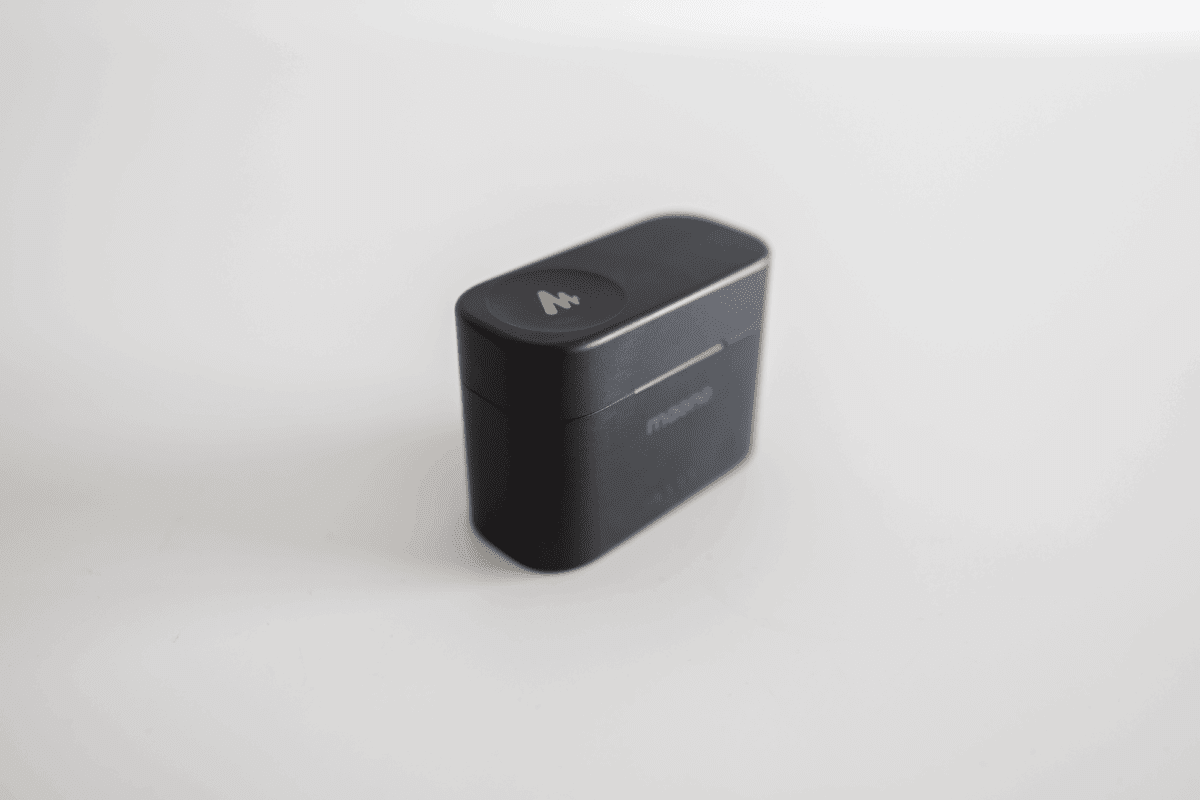
I initially tested this approach using my Sony WF-1000XM4 earbuds, which worked surprisingly well for basic recording. But having a dedicated microphone would obviously be better for audio quality and give me more flexibility.
The Wave T5 comes in four versions depending on which transmitter you need—USB-C, Lightning, camera connection, or a bundle with all three. I went with the complete kit since I wanted to test it across different devices.
At $89.99 for the complete bundle (currently discounted), the T5 costs significantly less than competitors like the Rode Wireless GO II ($299) or DJI Mic ($329). The real question: would this microphone give me the confidence and audio quality I needed to finally start making the videos I'd been putting off?
Style
The carrying pouch is compact and all black, down to the zippers. Unfortunately, the relatively jarring logo breaks up the otherwise stealthy appearance.
The main charging unit has a matte finish with subtle details that give it an elevated look. The logo is much more subdued—just slightly lighter than the body color on the front. On top, there's the Maono “M” logo in striking yellow.
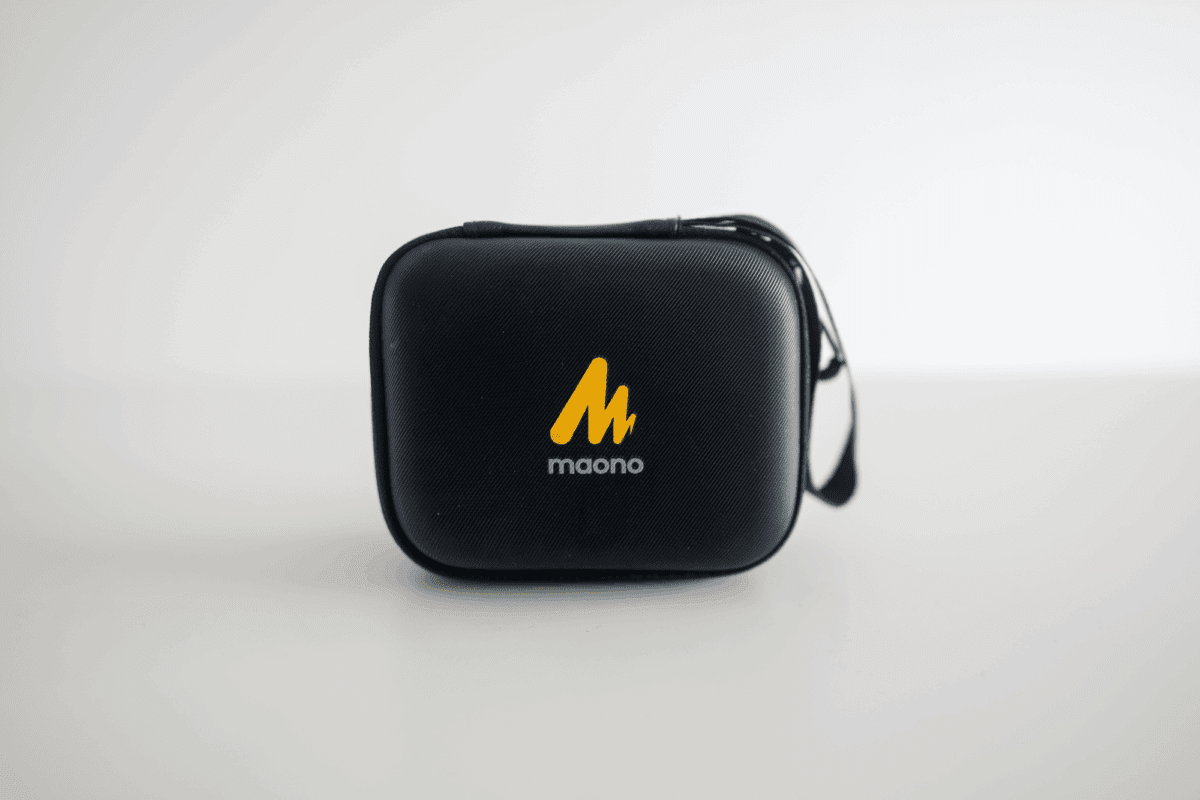
Despite my preference for everything black, the yellow accent looks tastefully done here. The regulatory marks at the bottom are barely visible, as they should be.
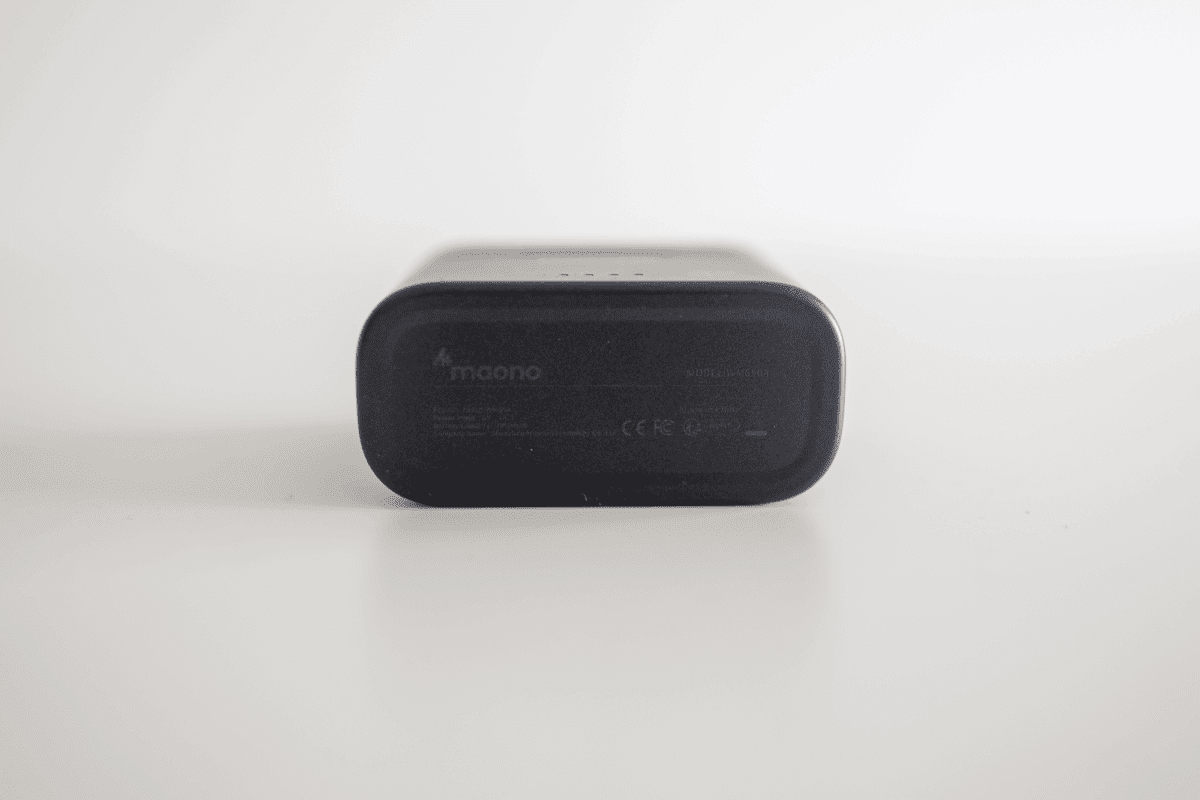
The design follows the AirPods charging case trend, where the microphones sit inside a protective case that doubles as a charger. Each transmitter weighs just 9 grams—light enough that you forget they're clipped to your shirt.
This used to be an ad.
But no one likes ads, so I got rid of them. If my articles helped you, I ask for your support so I can continue to provide unbiased reviews and recommendations. Every cent donated through Patreon will go into improving the quality of this site.
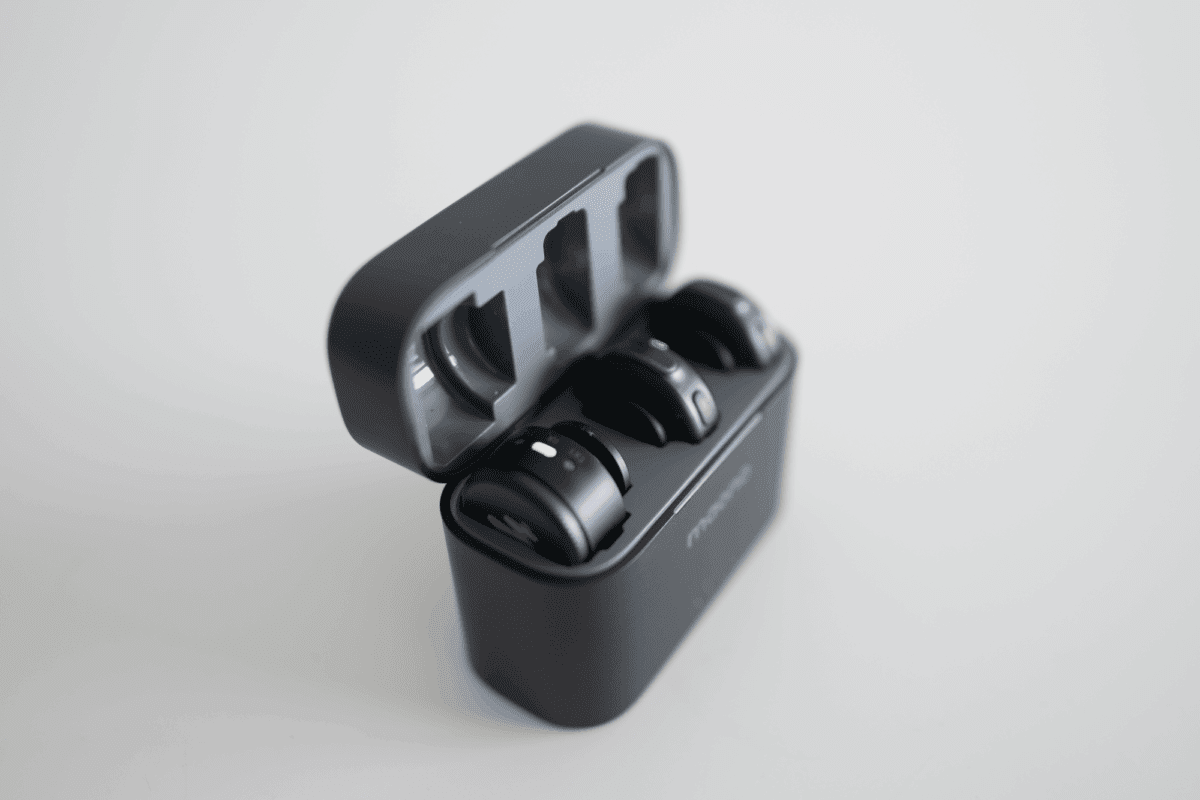
Tech
The Wave T5's noise cancellation system uses a dedicated Environmental Noise Cancellation (ENC) chip that processes audio at the hardware level, eliminating the latency and quality issues common with software-based solutions.
This specialized processor uses AI-powered algorithms to separate voice from background noise in real-time, achieving an 80dB signal-to-noise ratio. Think of it like the difference between your voice and background static on a radio.
In practical terms, if you're speaking normally and there's a quiet hum in the room, the mic captures your voice so clearly that the hum becomes virtually inaudible. Most people can't even detect background noise when the ratio is above 60dB, so 80dB means extremely clean audio.
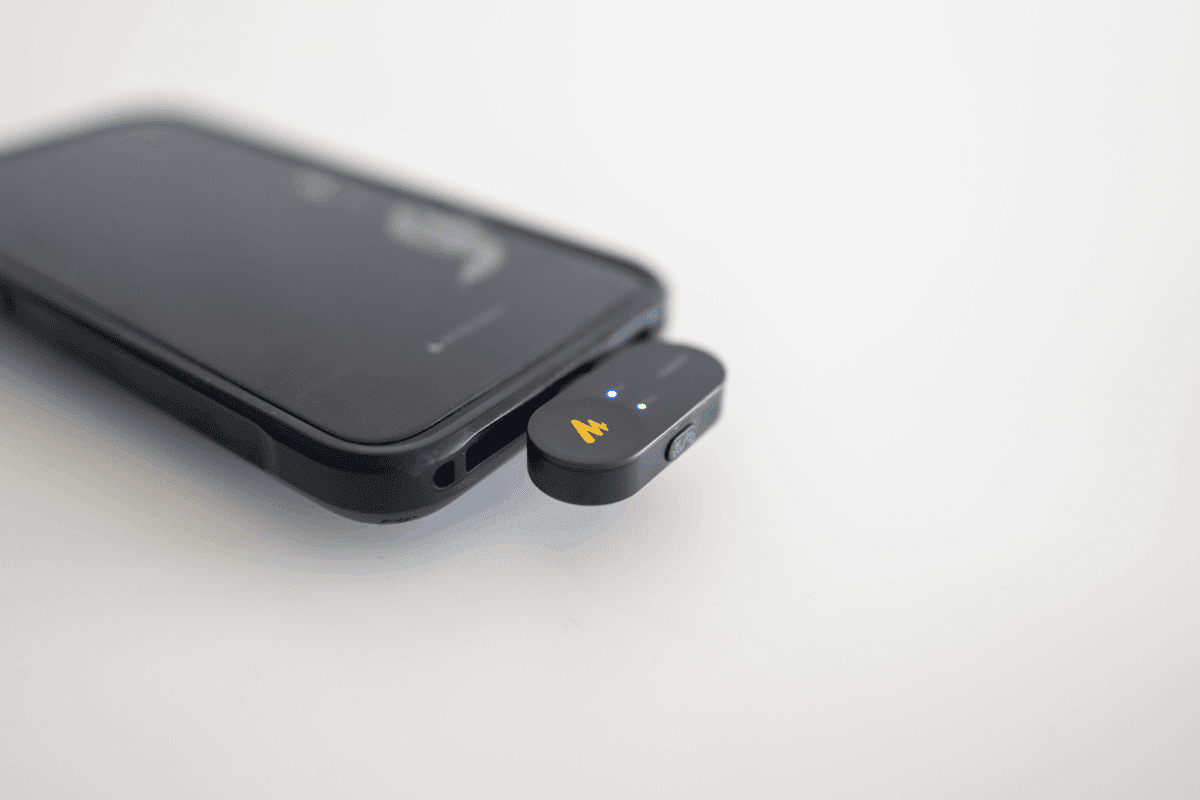
The 48kHz/24-bit recording quality matches what you'd find on microphones costing twice as much. The human voice sits around 85Hz-255Hz for fundamentals, but clarity and naturalness come from higher frequencies up to 20kHz. Budget mics from brands like Comica and Boya often cut off at 15kHz or 18kHz, making voices sound “muffled” or “telephone-like.”
The T5's full 20Hz-20kHz range captures everything—from deep voice tones to crisp consonants and breath sounds that make speech sound natural and professional.
Usage
What's included
The Wave T5 comes with a comprehensive accessory package that puts most competitors to shame.
The main charging unit contains two transmitters (the mics) and one camera receiver. The combo version includes slots in the pouch for USB-C and Lightning receivers, while single-device versions have those receivers built into the charging unit.
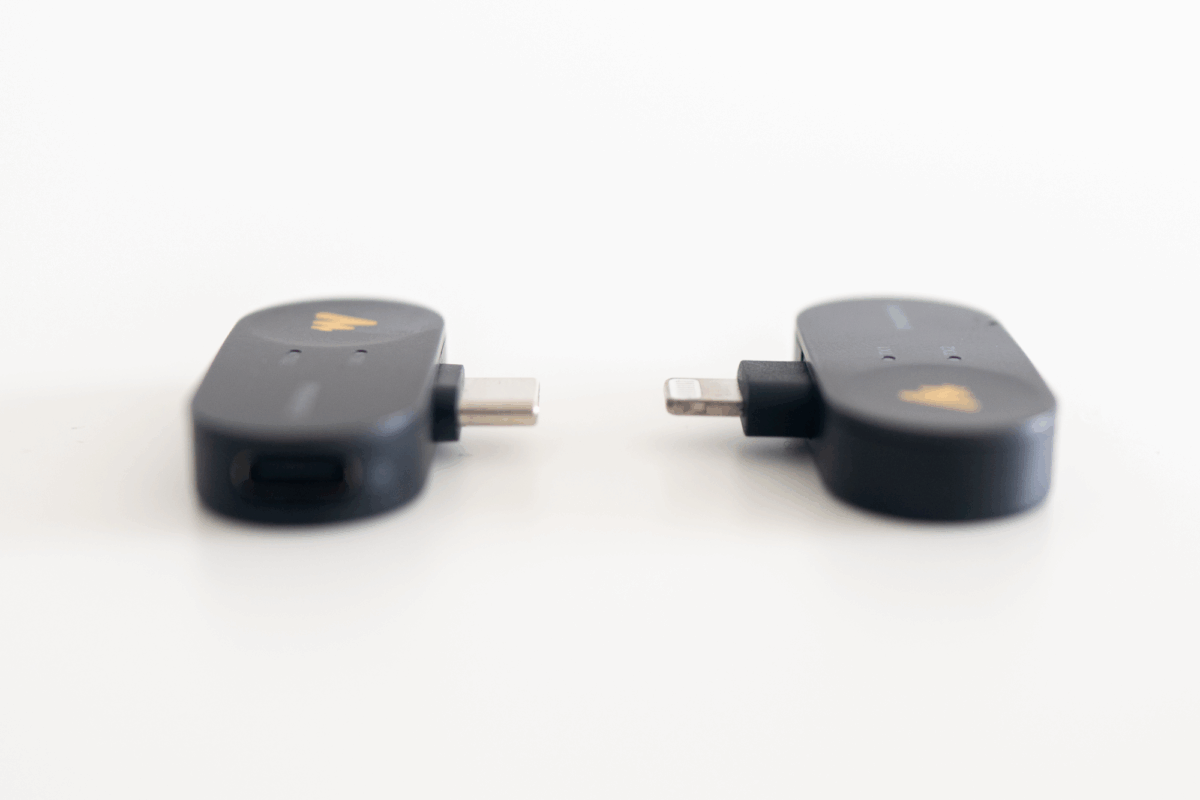
Both sides of the receivers have slots for clips that attach to the mics, so you can clip them onto your collar or shirt.
I designed a thing.

I found a 100 year old company that would create these heirloom quality canisters for me. They are handmade and will keep your tea leaves, coffee beans or anything that you need dry for years to come.
or read review
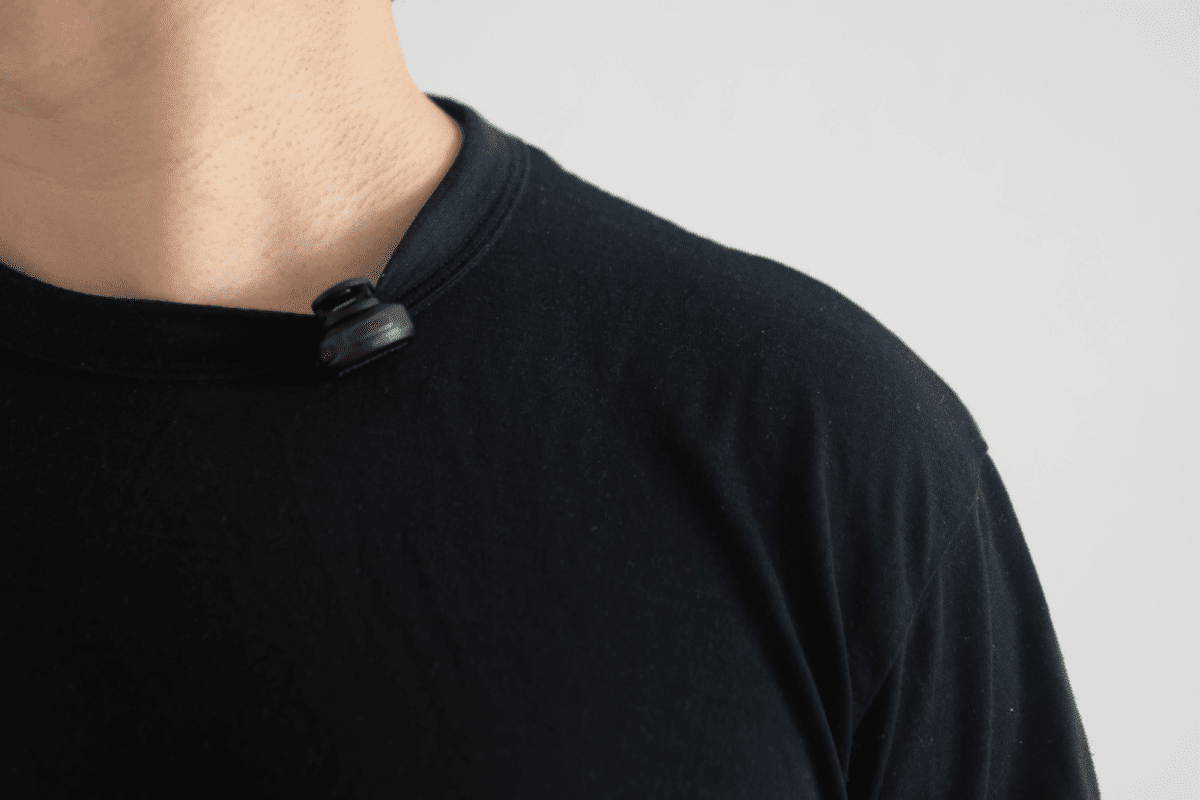
The opposite side of the pouch has a mesh slot for other accessories: two deadcats for wind noise protection, a USB-C to C cable to charge the unit, and a 3.5mm TRS camera cable to connect the camera receiver to your camera.


Despite having all the parts in the combo version, everything packs neatly with dedicated slots for most components. The mesh slot is tight enough to prevent even smaller accessories from falling out when you open the pouch.
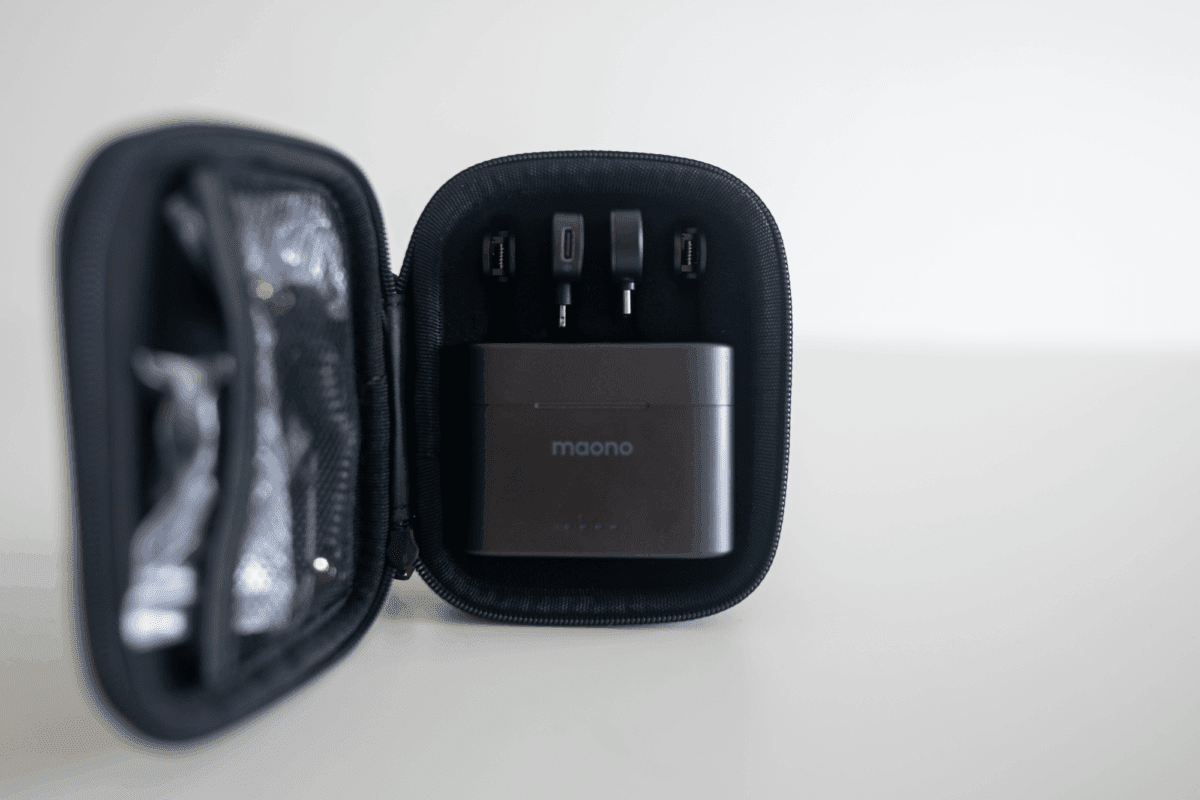
Setup and recording
Usage is refreshingly straightforward: plug the receiver into your phone and speak into the mic. The receiver comes in both USB-C and Lightning versions—something I appreciate as someone still using an iPhone 14.
The magnets on the clips that attach to the transmitters are very strong. I could hold them apart more than an inch, and they'd still snap into place.
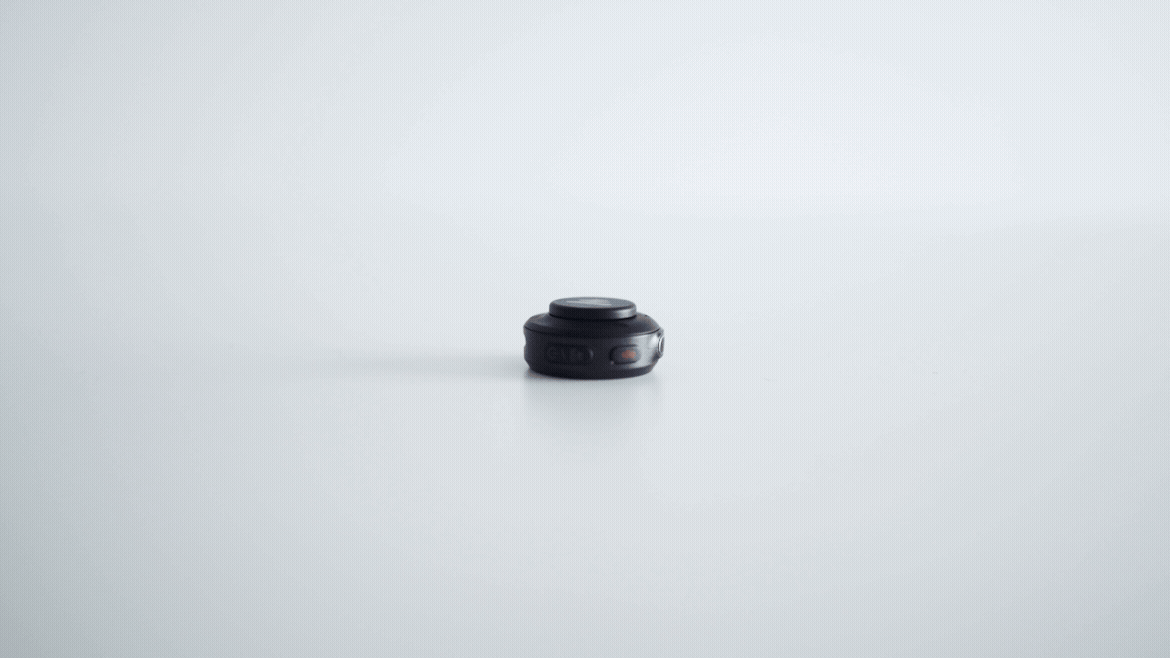
The downside of those strong magnets: I've opened the pouch to find clips stuck to the metal charging case, attracted by the magnetic force.
There's a red button on the transmitter that mutes the mic. The status indicator turns red when muted and green when active.
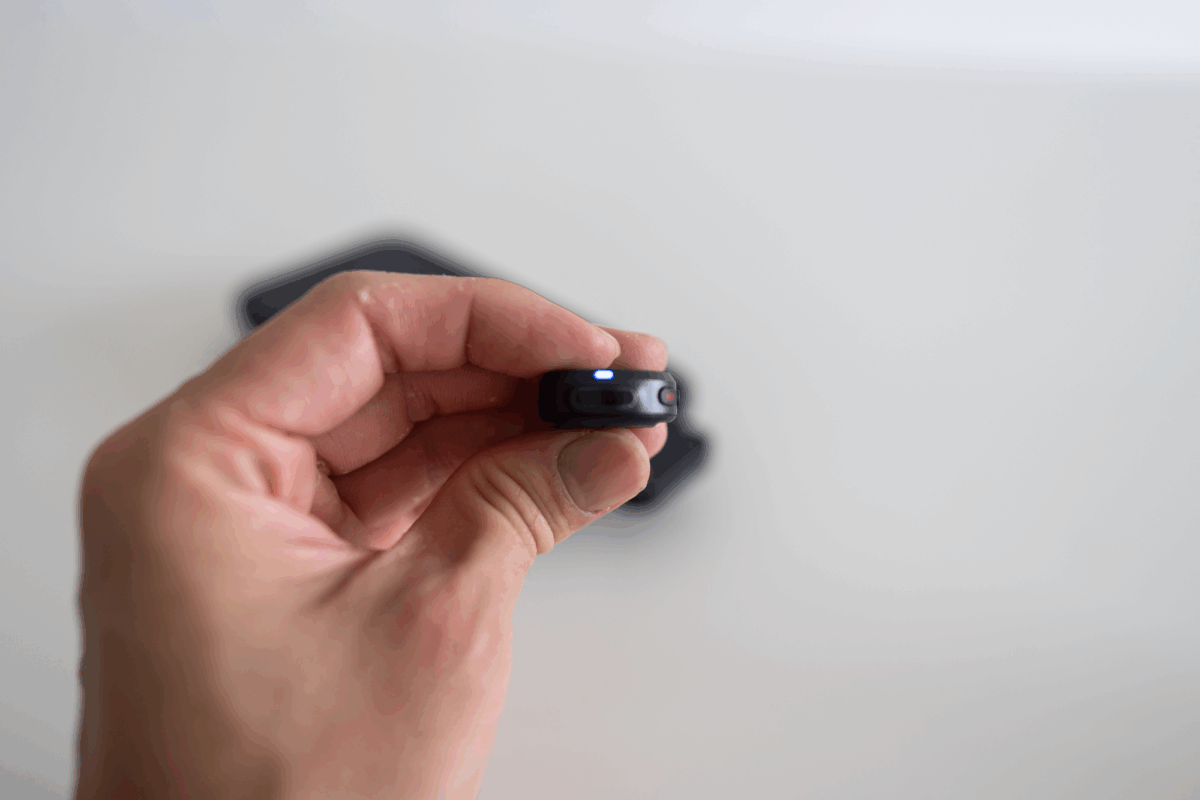
Long-pressing the mute button takes a photo or starts and stops video recording. However, it doesn't control voice recording in the iOS Voice Memos app.
One nice feature is that the transmitters connect automatically to the receivers, like most Bluetooth devices. No pairing hassles when you're setting up for a shoot.
Battery and charging
The transmitters and camera receivers snap into place with magnetic assistance in the charging unit, just like AirPods.
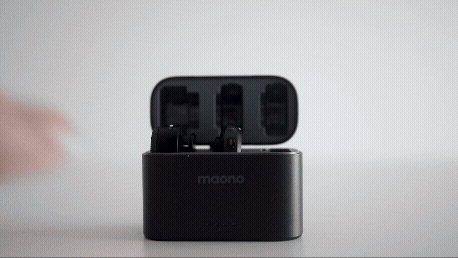
Battery life is impressive: 9 hours per transmitter plus 21 additional hours from the charging case, giving you 30 hours total. That's enough for extended live streams or full-day shoots without anxiety about running out of power.
When charging, the camera receiver and transmitters light up red, which initially looks concerning but simply indicates charging status. Red means charging, green means fully charged. The USB-C charging takes about 1.5-2 hours for a complete cycle.
Voice filters
The app includes voice processing filters like Voice Enhancer, Brightness, Warmth, and Huskiness. You can only apply one at a time, and they add subtle depth to monotonous voices. I created samples with each filter so you can hear the differences.
Noise cancellation
I tested the Maono Wave T5's noise cancelling in three different settings. The T5 gives you three main options for dealing with background noise, plus a custom option with a slider for 14 levels of fine-tuning through the mobile app. Most people will stick with the three presets since they cover most situations well.
Slight mode lets some background noise through while making your voice the main focus. I used this for interview-style recordings where I wanted to keep some of the room's natural sound. You'll still hear a coffee shop's ambient buzz or outdoor birds, but your voice cuts through clearly. It feels more natural and less “produced” than completely silent recordings.
Moderate mode kills most annoying background noise while keeping your voice sounding normal. This became my go-to setting. It eliminated the constant hum from the air conditioner and background chatter in busy spaces, but didn't make my voice sound robotic or over-processed. Perfect for most content creation where you want clean audio without the sterile feeling of a recording booth.
Aggressive mode creates almost studio-like silence around your voice. I tested this while recording next to a busy street, and it was like the traffic noise just disappeared.
I also tried this in an office with a person talking right next to me and the background know was completely removed.
The downside is your voice can start sounding a bit unnatural if you push it too hard. Good for noisy environments where you need crystal clear audio, but I wouldn't use it as a daily setting.
The real test came when I recorded outside on a windy day near a construction site. Even without the windscreen, the T5 managed to capture clear speech while cutting out most of the machinery noise and wind interference. That's when I realized this isn't just marketing—the noise cancelling actually works.
Maono Link app
Settings are controlled through the dedicated Maono Link app. You can't change settings without first connecting the device, which means no offline adjustments that sync later—something I wish they'd implement.
Firmware updates take about 3-5 minutes. You have to connect each module to update individually rather than updating everything at once, which feels tedious but makes sense technically. The app works well on mobile devices but PC/Mac users are limited to basic plug-and-play functionality without access to the advanced noise cancellation controls.
The pouch itself is durable with a nice wrist strap, though I found it hard to get my larger hands through easily. I guess this means it won't come off easily either.
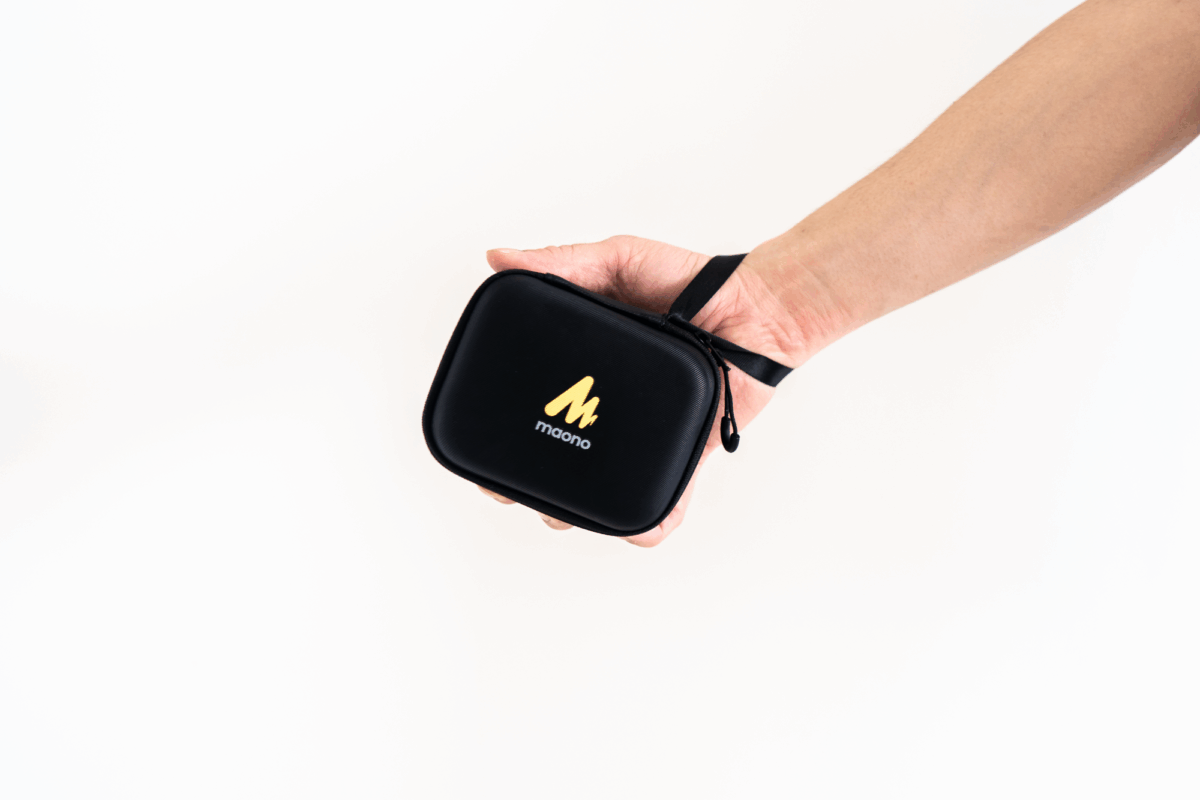
Conclusion
If you want wireless audio that just works—without selling a kidney—this is a smart choice. The Wave T5 punches way above its weight class, delivering professional audio quality with zero fuss.
At $89.99 for the complete bundle (currently discounted), it costs a fraction of what Rode and DJI charge while including accessories they make you buy separately. The 30-hour battery life, plug-and-play setup, and effective noise cancellation make it accessible to creators who previously faced barriers of cost and complexity.
Yes, the batteries aren't replaceable, and it lacks internal recording capabilities found in pricier competitors. But for mobile content creation, streaming, and voiceover work, the T5 delivers exactly what most creators actually need: clean sound, reliable performance, and idiot-proof operation that gets out of your way and lets you focus on creating.
Like this review? See all of my in-depth reviews.
Also, consider supporting me by being a Patreon. Every cent given will go back into improving the content of this website.
Tagged maono microphone review tech